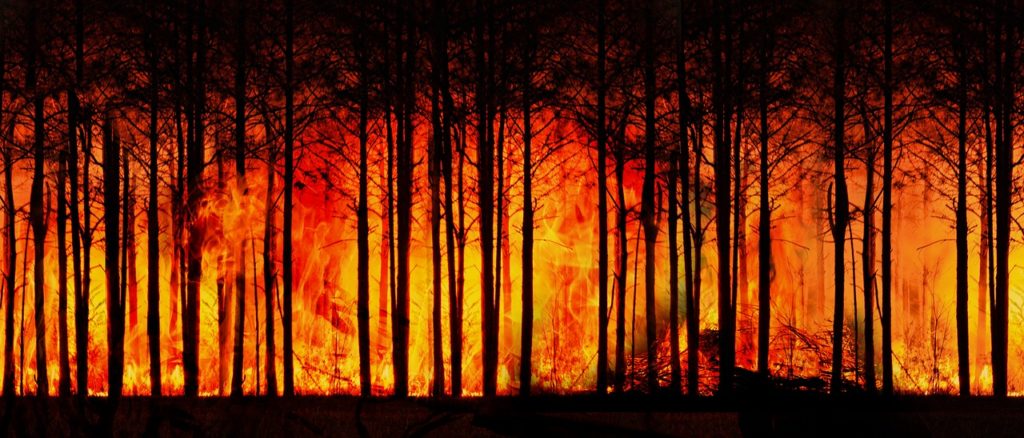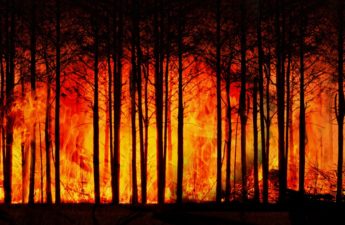
Public Health Insider
Public Health — Seattle & King County
Key messages
- Stay safe indoors and avoid outdoor exercise when the air quality index (AQI) is above 150. Check local AQI at PSCleanAir.org, and 5-day smoke forecasts at WAsmoke.blogspot.com.
- People with asthma, heart and lung conditions, or diabetes should move indoors when AQI is above 100, and keep inhalers and medications on hand. Children, adults ages 65 and over, and pregnant people are also at higher risk from smoke.
- Close windows and doors on smoky days. Create a clean air room using a HEPA or DIY box fan filter. Run AC if you can, or move to a mall, library, cooling shelter, or other air-conditioned building if it becomes too hot.
Since 2017, rising temperatures and dryer conditions have created a health risk we’re learning to expect in the Pacific Northwest – wildfire smoke season.
This year, wildfire smoke is forecast to start early in King County and last into the fall. Record-setting forest fires have already darkened skies in Canada and the eastern U.S., and our region is set to be next. By preparing now, you can help to protect your and your family’s lungs, heart, and health from smoke.

As severe weather and climate change affect our physical and mental health more and more, we can take steps together as a community toward local adaptation and resiliency. This includes health education, increased access to health care, and maintaining and increasing the tree canopy across our county – especially in hotter urban areas like Rainier Valley. We must also work on the larger factors that are changing our climate, and do our part to rapidly reduce fossil fuel use while transitioning to renewable energy.
What is the health threat from wildfire smoke?
Wildfire smoke is unhealthy for everyone, especially after heavy exercise or spending long periods of time outside. In Washington State, researchers have found that more people need to visit an Emergency Department for heart and lung issues after smoky days.
Asthma and other respiratory visits go up immediately after wildfire smoke exposure, and cardiovascular visits rise a day or more after someone was exposed. Children and young to middle-aged adults (ages 19-64) are at especially high risk of these emergency visits—a reminder that exercising outdoors on a smoky day can be dangerous for everyone.
Everyone should stay safe indoors and avoid exercise when the air quality index (AQI) is above 150. Check local AQI at PSCleanAir.org, and plan ahead with 5-day smoke forecasts at WAsmoke.blogspot.com. People with asthma, heart and lung conditions, or diabetes should move indoors when AQI is above 100, and keep inhalers and medications on hand. Children, adults ages 65 and over, and pregnant people are also at higher risk from smoke.
Communities of color, people with underlying illness or disability, and low-income communities in King County are at higher risk from health problems caused by wildfire smoke and climate change, because of historical and ongoing health inequity and a lack of access to care.
Smoke from forest fires contains tiny particles and other chemicals that can irritate your eyes, nose, throat and lungs and cause widespread inflammation. It can also trigger asthma attacks and worsen existing lung, heart, or circulatory conditions.
Move someone inside if they have a headache, sore throat or nose, cough, burning eyes, dizziness, or wheezing, and be sure to keep inhalers and medications ready. Call 911 if someone has shortness of breath or chest pain.
How to prepare for wildfire smoke this year
The most important way to stay safe is to spend time indoors when it is smoky outside. Close windows and doors, set up a clean air room using a HEPA filter or DIY box fan filter, and run air conditioning if possible. If you have an HVAC system, use filters with a high rating (MERV 13 or higher) and set the system to recirculate. If it becomes too hot indoors, move to a mall, library, or other air-conditioned building.
Portable HEPA air cleaners designed for one room typically range from $100 to $300. Wirecutter has a review of some of the top portable air cleaners. You can also make your own box fan filter using the instructions below or at Puget Sound Clean Air Agency’s website. Replace filters when they become noticeably darker, which will happen more quickly on smoky days.
To help keep indoor air clean, avoid burning candles or incense, frying or broiling food, using gas stoves, vacuuming, or spraying aerosol products.
Do masks protect from wildfire smoke?
If you can’t avoid spending time outside when it is smoky, well-fitting N95 masks offer good protection from wildfire smoke for most people—see this PDF for more information. Because wood smoke particles are so tiny, KN95 masks may not offer the same level of protection as an N95, while cloth masks don’t provide much protection from wildfire smoke.
Because N95 masks can block air flow and make it harder to breathe, they can worsen some pre-existing health conditions if worn for too long. Talk to your healthcare provider and remember that moving indoors is the safest option.
Help our community stay safe
Help family, friends, and neighbors who may be at risk plan for wildfire smoke this season, and check in on them on smoky days.
Check kcrha.org/news/ for a list of cooling shelters on extremely hot and smoky days that are open to everyone.
Receive alerts about hazards in King County by signing up for Alert King County. It’s free, and you can choose to get notifications by text, email, or phone.
For more information
- Visit our Wildfire Smoke Preparedness page for print resources (including a one-page flyer in English and Spanish), information, and tips in multiple languages.
- The EPA has detailed instructions about making a clean room.
- Check Puget Sound Clean Air Agency daily for the latest air quality reports.
- Find guidance for school and child care activities and other resources from the Washington State Department of Health.


